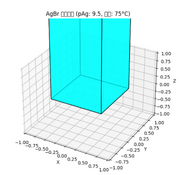rmazzullo
Subscriber
One idea I would like to share, as I hope it bears some fruit in the near future. I like to 'think outside the box' sometimes to see what might actually be accomplished. (Walk with me on this)....it appears that there are some basic emulsion making steps that are common to almost all emulsions that we are currently aware of - and using - on our level. It might be possible to create a 'template' in Excel that would provide a variety of 'controls' to adjust (or select) component type, amount, strength, addition rates, temperature, vAg, grain shape, motor speed, digestion time, ripening time, etc, etc that can be used to create a virtual emulsion, with the settings of each control providing a value of each component (and process step) to create a top down view of how the emulsion "should" turn out, with logging of each moment of each step. Now here is the fun part...it might be possible to use the excel spreadsheet to control actual servo motors, sensors, etc to actually get close to the emulsion you just 'designed' in excel....with actual feedback controlling the mix and recording everything - every misstep, success or failure, much like an aircraft 'black box'. If this is doable (and the sketch up I made to visualize this is physically well within reach) then we can design and create many variations of simple emulsions as we'd like. The drawbacks are that not everyone's hardware will be the same, neither are motors, house power, water quality, etc, etc. I am still trying to figure out how to enable users to create the same emulsion by sharing a 'make file', irrespective of locale. (If two people have the same recipe for a chocolate layer cake, with exactly the same ingredients and made the same way, there will still be two different chocolate layer cakes in the end.)
Now I know I am missing a whole bunch of pieces here, but my basic premise is that it might be possible to electromechanically control the emulsion making process - and have a log of each step (and whatever variations may occur) on a very small scale. From everything I have been reading and digesting (no pun intended) so far, this idea is very likely decades old and something somewhat similar had to be done by the big guys for process control for just as long. I haven't even included / approached coating issues with this as yet - this was just an idea concerning emulsion making. I know it is way cheaper to do all this by hand and just take really good lab notes, but....
And...what if AI could be incorporated to make it's own emulsion suggestions based on what it extrapolates from the data sets? Could be interesting.
These are just some random thoughts intended to start a discussion...I am not anywhere near the finished excel spreadsheet (yet). It may turn out that I am trying to re-invent the wheel...again.
I wouldn't be surprised if the Photo Powers That Be wished we didn't go where this could go. Maybe when I make and test a few dozen emulsions I will wish I didn't go there either.
Sorry for the blather. I hope PE isn't up there shaking his head...
Bob
Now I know I am missing a whole bunch of pieces here, but my basic premise is that it might be possible to electromechanically control the emulsion making process - and have a log of each step (and whatever variations may occur) on a very small scale. From everything I have been reading and digesting (no pun intended) so far, this idea is very likely decades old and something somewhat similar had to be done by the big guys for process control for just as long. I haven't even included / approached coating issues with this as yet - this was just an idea concerning emulsion making. I know it is way cheaper to do all this by hand and just take really good lab notes, but....
And...what if AI could be incorporated to make it's own emulsion suggestions based on what it extrapolates from the data sets? Could be interesting.
These are just some random thoughts intended to start a discussion...I am not anywhere near the finished excel spreadsheet (yet). It may turn out that I am trying to re-invent the wheel...again.
I wouldn't be surprised if the Photo Powers That Be wished we didn't go where this could go. Maybe when I make and test a few dozen emulsions I will wish I didn't go there either.
Sorry for the blather. I hope PE isn't up there shaking his head...
Bob














